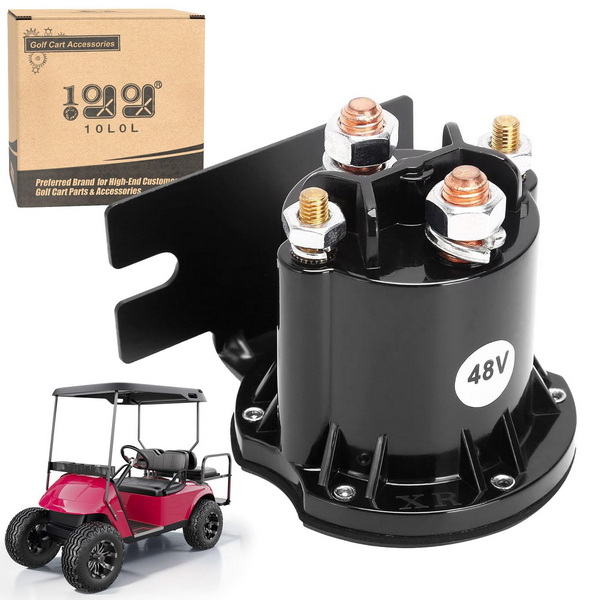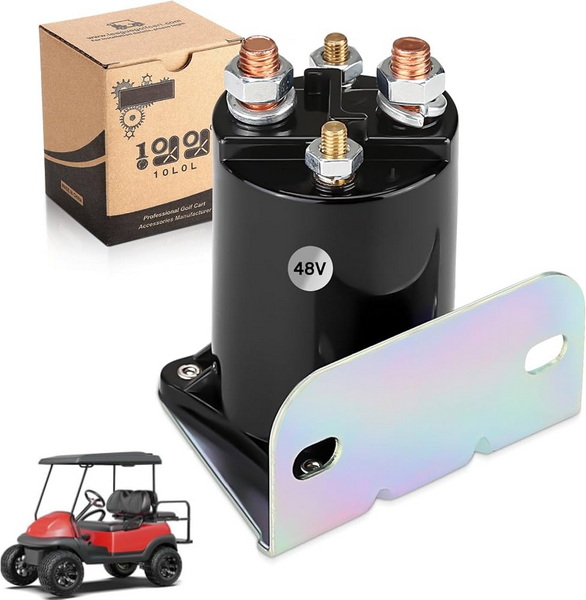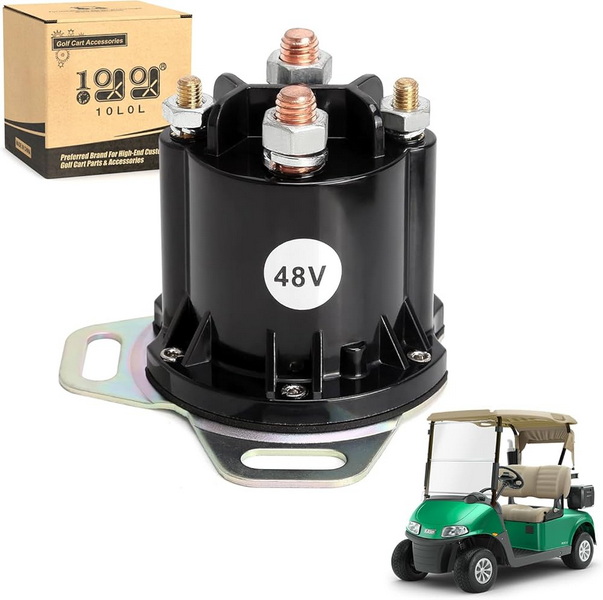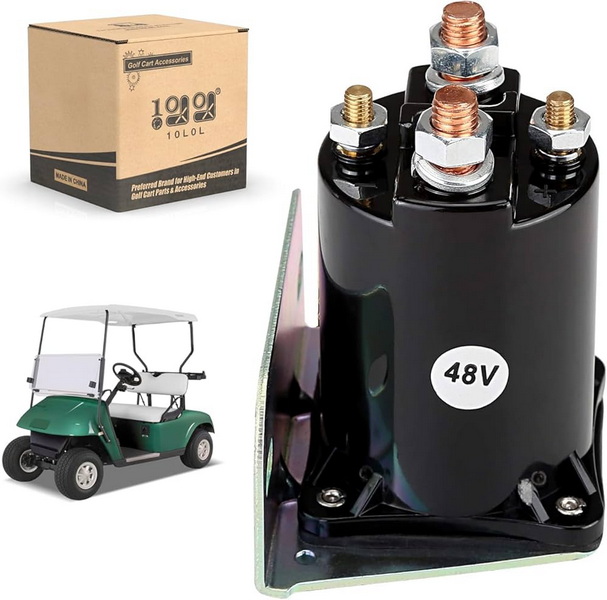Content Menu
● Understanding the 48V Solenoid
>> Components of a 48V Solenoid
● How Does a 48V Solenoid Work?
● Importance of a 48V Solenoid
● Common Issues with 48V Solenoids
● Replacing a 48V Solenoid
>> Gather Tools:
>> Disconnect Power:
>> Locate Solenoid:
>> Remove Old Solenoid:
>> Install New Solenoid:
>> Reconnect Battery and Test:
● Troubleshooting Tips
● Signs of a Failing Solenoid
● Testing Your Solenoid
● Conclusion
● FAQ
>> 1. What voltage does my EZGO golf cart use?
>> 2. How do I know if my solenoid is bad?
>> 3. Can I replace my solenoid myself?
>> 4. What should I do if my cart won't move even after replacing the solenoid?
>> 5. How often should I check my golf cart's electrical system?
Electric golf carts have become increasingly popular for recreational use, particularly in golf courses and residential communities. One of the critical components that ensure the smooth operation of these vehicles is the solenoid, specifically the 48V solenoid found in EZGO electric golf carts. This article will delve into what a 48V solenoid is, its function, components, installation process, troubleshooting tips, and more.

Understanding the 48V Solenoid
A solenoid is an electromechanical device that acts as a switch to control the flow of electricity in a circuit. In the context of an EZGO electric golf cart, the 48V solenoid plays a vital role in connecting the battery to the motor, allowing the cart to start and move.
Components of a 48V Solenoid
The 48V solenoid consists of several key components:
- Coil: Made of copper wire, it generates a magnetic field when electrical current passes through it.
- Plunger: A movable metal rod that opens or closes the circuit by moving in response to the magnetic field created by the coil.
- Contacts: Metal plates that connect or disconnect the electrical circuit when the plunger moves.
These components work together to ensure that when you press the accelerator pedal, electrical power flows from the batteries to the motor, enabling movement.
How Does a 48V Solenoid Work?
When you turn on your EZGO golf cart and press the accelerator pedal, here's what happens:
1. Activation: The ignition switch sends a signal to the solenoid.
2. Magnetic Field Generation: The coil inside the solenoid energizes, creating a magnetic field.
3. Plunger Movement: The magnetic field pulls the plunger inward, which then closes the contacts.
4. Current Flow: This closure allows current to flow from the battery to the motor, starting it and propelling the golf cart forward.
5. Deactivation: When you release the accelerator pedal, the current stops flowing, and the plunger returns to its original position, opening the circuit.
Importance of a 48V Solenoid
The 48V solenoid is essential for several reasons:
- Starting Mechanism: It acts as a switch that controls when power is sent to the motor.
- Safety Feature: It prevents accidental starts when not needed and protects against electrical overloads.
- Efficiency: By controlling power flow effectively, it helps maintain battery life and overall performance.

Common Issues with 48V Solenoids
Despite their importance, solenoids can fail or malfunction over time. Here are some common issues:
- No Click Sound: If you turn on your golf cart and do not hear a clicking sound from the solenoid, it may indicate a failure.
- Cart Won't Move: If pressing the accelerator does not result in movement, it could be due to a faulty solenoid.
- Intermittent Operation: If your cart sometimes works and sometimes doesn't, it may be due to poor connections or a failing solenoid.
Replacing a 48V Solenoid
Replacing a faulty solenoid is relatively straightforward but requires some basic tools and safety precautions. Here's how you can do it:
Gather Tools:
- Socket set
- Screwdriver
- Multimeter (for testing)
- Safety gloves
Disconnect Power:
- Always disconnect the battery before working on electrical components to prevent shocks or damage.
Locate Solenoid:
- The solenoid is usually located under the seat or near the battery compartment.
Remove Old Solenoid:
- Unscrew any bolts holding it in place.
- Disconnect all wires from terminals (taking note of their positions).
Install New Solenoid:
- Connect wires to corresponding terminals on the new solenoid.
- Secure it with screws or bolts.
Reconnect Battery and Test:
- Reconnect your battery and test if everything works correctly by turning on your cart and pressing the accelerator.

Troubleshooting Tips
If your golf cart still does not operate after replacing the solenoid, consider these troubleshooting steps:
- Check Battery Voltage: Ensure that your batteries are fully charged and functioning properly.
- Inspect Wiring Connections: Look for any loose or corroded connections that could impede electrical flow.
- Test with Multimeter: Use a multimeter to check if voltage reaches both sides of the solenoid when activated.
Signs of a Failing Solenoid
Recognizing early signs of solenoid failure can save you from being stranded. Here are some symptoms to watch for:
- Intermittent Operation: Your golf cart may run perfectly one day but struggle to start or move another day due to inconsistent voltage supply or internal wear on the solenoid.
- Unusual Clicking Sounds: A failing solenoid might produce louder clicking noises than usual when attempting to engage. This indicates it's not fully engaging despite receiving power.
- Burnt Smell or Heat from Solenoid: Overheating can occur due to loose connections or internal faults within the solenoid. If you notice heat or smell burning plastic, immediate attention is required.
Testing Your Solenoid
To ensure your 48V solenoid is working correctly, follow these testing steps:
1. Set your voltmeter to measure ohms.
2. Disconnect all wires from both large posts of your solenoid.
3. Check for continuity between both large terminals; there should be no reading (infinite resistance).
4. With everything reconnected, turn on your ignition key and press down on your accelerator pedal; there should be an audible click from your solenoid.
5. If you hear clicking but no movement occurs, check for voltage at both small terminals while pressing down on your pedal; full battery voltage should be present if everything is functioning correctly.
If any readings are out of range or inconsistent with expectations during these tests, consider replacing your solenoid with a new one that matches your cart's specifications.
Conclusion
The 48V solenoid is an integral part of an EZGO electric golf cart's electrical system. Understanding its function can help you maintain your vehicle effectively and troubleshoot any issues that arise. Regular checks and timely replacements can ensure that your golf cart runs smoothly for years to come.

FAQ
1. What voltage does my EZGO golf cart use?
Most EZGO electric golf carts operate on either 36V or 48V systems. Check your model specifications for confirmation.
2. How do I know if my solenoid is bad?
Common signs include no clicking sound when turning on, failure to move when pressing the accelerator, or intermittent operation.
3. Can I replace my solenoid myself?
Yes! With basic tools and safety precautions, replacing a solenoid can be done at home.
4. What should I do if my cart won't move even after replacing the solenoid?
Check battery voltage, inspect wiring connections for corrosion or looseness, and test with a multimeter for proper voltage flow.
5. How often should I check my golf cart's electrical system?
Regular maintenance checks every few months are recommended to ensure all components are functioning correctly.











































